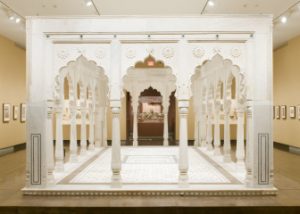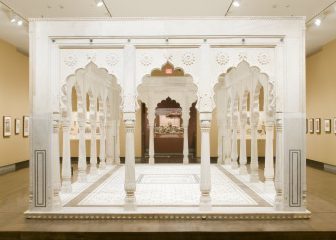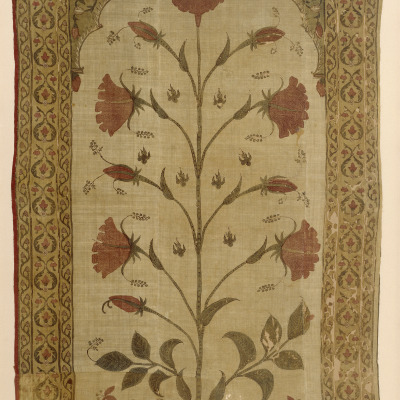
India: Mughal Art and Architecture: Prompts for Extended Thinking
Use these prompts after your Evans Distance Learning session or museum visit to activate creative, critical, and reflective thinking.
Creative Thinking
Using our imaginations when looking at art can activate prior knowledge and spark curiosity.
Imagine transporting the Garden Pavilion to a different place and time. It can be anywhere you have studied in World History up until now. How does the function, perception, and mission of the artwork change in this alternative atmosphere? What is successful about this transplant? Back up your reasoning with evidence from the alternative culture in relation to the materials, motifs, and construction of the artwork. For example: if we were to place the garden pavilion in Ancient Egypt, we can imagine some of its functionality would be retained because the warm sunny climate is similar. But what about the materials, construction, and motifs? Would the marble, schist, and bronze be familiar materials? What would Ancient Egyptians think about the form and structure of the arches? What about the columns and the decorative motifs?

Indian, Rajasthan, vicinity of Bharatpur
Garden Pavilion, 19th Century
White marble with black schist and brown mottled marble inlays
Adolph D. and Wilkins C. Williams Fund, 2005.2
Reflective Thinking
Thinking about our experience with art helps us connect to people and ideas across time and place. Use these prompts to help students reflect on their engagement with Mughal art and architecture.
- Having spent time with Mughal Art and architecture at VMFA, what more do you know about the Mughals? How do you imagine their lives were similar to or different from your own?
- What did the art NOT answer for you? What are you curious about now that you have seen the art and architecture of Mughal India? Name three things that you wish you knew more about and why. Visit your school library and databases to find answers to your questions.
- Compare the art in your life (home, school, place of worship) to that of the Mughals. Consider materials used, presentation, audience, intended use, value, etc.
- Imagine you were to time travel and visit the court of a ruler in Mughal India. Based on what you have seen in your Evans DLP session, what would you expect it to be like? What might it sound, smell, look, and feel like? What about YOU would surprise the Mughals?




